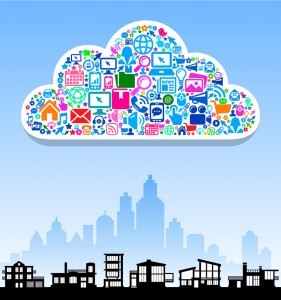Wasp Barcode Technologies: The Barcode Solution People
Internet of Things is Changing How We Live and Work
This is the first of a two-part article that explains how the Internet of Things works and its impact on our personal and professional lives. Part One share experts’ predictions of this technology's economic benefits.
The drive to do things quicker, easier, and better is being fueled by trending technology, the Internet of Things (IoT). Much has been made of this emerging solution that is destined to minimize human intervention for everyday tasks in our personal and professional lives.
Most of us have heard of the IoT, but few truly understand how it works. This article provides an overview, which includes experts’ economic predictions and examples of its potential impact.
What is the Internet of Things?
Every transaction or click we make is recorded and captured, from surfing the Internet and posting on social media to buying consumer goods and tracking assets and inventory. For example, the barcode scanner that checks you out when buying a pair of pants is capturing information about the product, such as color, size, and style. It’s also tracking your actions, especially when you provide the clerk with your ZIP code or use a loyalty card or mobile coupon. All of this gathered information is called data, which is traditionally stored in a database on a computer.
[caption id="attachment_5948" align="alignright" width="281"]

The Internet of Things (IoT) captures data from physical objects and analyzes it for instant decision-making.[/caption]
In the above example, retailers analyze the product data to make educated buying decisions to ensure they have the right sizes and colors in stock. They also use the customer data to win your loyalty by offering incentives that encourage you to shop with them again.
This exchange of information about events is common practice in companies of all sizes and industries. What is different now, however, is that any physical object or “thing”—from highways to coffee makers—can contain an embedded sensor that automatically captures data and securely shares it over the Internet using links to wireless networks in the Cloud.
These connected networks or “physical information systems” churn out huge volumes of machine-generated data that is too large to be stored and managed via traditional methods. With the IoT, computers can immediately analyze this
big data to identify current patterns and predict future behaviors. The object then uses these findings to rapidly respond to its environment—often without human intervention.
The ability to connect physical objects to the Internet; wirelessly stream and share event data while simultaneously using analytics to decipher it; and instantly turn big data into meaningful business intelligence—largely without the help of human beings—is what is known as the Internet of Things.
The possibilities are endless.
This game-changing capability opens the door to a wide array of possibilities, says
SAS and
McKinsey, who predict that:
- Pilotless trucks will safely and quickly transport products across the country by avoiding traffic delays and accidents
- Farming equipment will use ground sensors, data collected by remote satellites, and current crop conditions to adjust the way it farms on certain plots of land
- Sprinkler systems will analyze weather forecasts, device sensors, and historical water usage data to appropriately water lawns
- Billboards will change messaging based on assessments of how passersby fit consumer profiles
- Proactive security systems will automatically heat and cool homes and offices based on an individual’s proximity, past preferences, and current weather conditions
Sound futuristic? A little. But according these industry experts,
the IoT will significantly impact the global economy in a mere five years.
- Cisco estimates that 50 billion devices will connect to the Internet by 2020.
- Gartner believes that by 2020, global suppliers of products and services will generate incremental revenue exceeding $300 billion, which will boost the total economic impact to $1.9 trillion.
- In the next 20 years, Intel predicts that cities will spend $41 trillion on infrastructure upgrades that support IoT.
- McKinsey expects the auto industry to widely deploy IoT technology, which should reduce accidents for a significant savings of $100 billion each year.
- The remote patient monitoring market, which decreases healthcare delivery costs, will double by 2016.
- This “Industrial Internet” could double the U.S. economy by adding $10 - $15 trillion to the global GDP, states GE.
What’s this mean to you?
In our “bigger-is-better” world, the race to intelligently mining big data is on. Scanning devices such as
barcode scanners and
mobile computers are already evolving into mobility masters that will instantly exchange information in the IoT chain of command. But it will take more than hardware to compete in this connected world.
Want to learn more? Part Two describes the benefits and challenges of big data and shares predictions of its impact on the manufacturing, healthcare, and retail industries.



